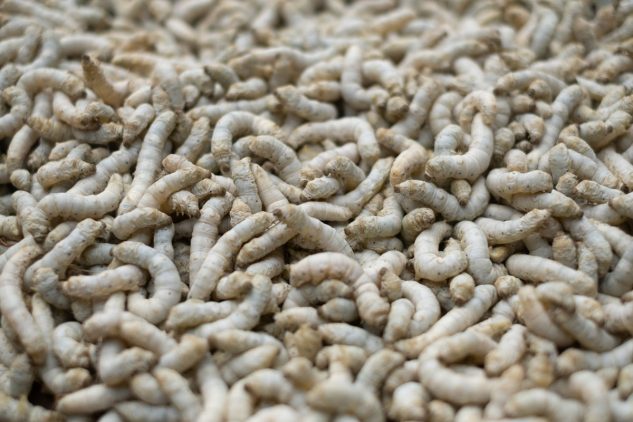How To Get Rid of Maggots in a Trash Can
If you have ever opened your trash can up and let out an unbecoming squeal at the white, squirming bugs inside, you are not alone. Flies love to breed in repulsive areas, and that usually results in unaware homeowners finding maggots in their trash cans. The following is how to get rid of magots in your trash can.
There are a lot of ways to get rid of maggots in your trash can, comprising vinegar, bleach, salt, boiling water, and insecticides. Getting maggots in your trash can, could happen to anybody. These techniques decrease, even eliminate, the maggots and production of flies out of your trash can.
Boiling Water
Boiling water is one of the fastest and simplest ways to get rid of maggots. It occurs almost instantly.
Maggots are fly larvae with tender, undeveloped bodies, so they have no way of defending against boiling water.
There are a few disadvantages to this technique, however:
Plastic melts at anywhere from 200 degrees Fahrenheit to 350 degrees Fahrenheit, so if your boiling water is any hotter than that, it could distort your trash can.
Now, you are going to have a soggy mess of dead maggots in your trash can. You are probably going to want to hose the whole thing (in and out) afterwards.
If any maggots don’t die during the boiling, they are going to grow up, lay additional more eggs, and begin the whole process again.
Freezing
Likewise, to the above, maggots cannot deal with the cold any more than they can deal with the heat. You can get rid of them off by exposing them to extremely cold temperatures.
If you live in a wintery climate, this can be as easy as leaving your trash cans outside during the night.
Another technique for warmer climates is collecting the maggots in a container and placing them in a freezer.
This is a more hands-on approach than some people might be comfortable with; however, it can be effective for those that are squeamish about boiling them to get rid of them. It’s a more humane technique.
Vinegar
Vinegar is a natural insecticide that additionally doubles as a deodorizer and cleaner. You can mix 1 cup of vinegar with 2 cups of water to create an effectual, yet all-natural maggot destroyer.
There are 2 ways to use vinegar in practical terms.
The first is with a spray bottle for direct, precision attacks on the maggot piles; your vinegar mixture is going to soak and get rid of them.
The second technique is using a sponge or compress to clean your trash can. This is more of a precautionary approach than an extermination technique, however, it can still get results. The flies are not going to want to land in or on your trash can and breed there.
For maximum effectiveness, use both vinegar techniques.
Bleach
We are not the only ones who despise the smell of bleach! For maggots, on the other hand, it isn’t just a matter of crinkling their nose; the noxious fumes of bleach can get rid of them in as little as half an hour.
To use bleach against maggots, begin by diluting it with an equal amount of water. Then spray your solution into your garbage can, generously coating both your trash and the trash can itself. Close the lid and place it outside (if it has one, if it doesn’t, still take it outside) and let it sit for close to an hour.
Some maggots could survive the fumes, so to be thorough, repeat the process 1 two 2 times.
Diatomaceous Earth
If you are not a fan of chemicals, think about utilizing diatomaceous earth to get rid of the maggots in your trash can.
It’s an all-natural material made from microscopic sea life, and whereas it appears like a powder to our eyes, it’s actually quite serrated on a molecular level. It is going to act like razor wire to tender and pulpy larvae.
Another benefit of using diatomaceous earth is that it works on maggots and so much more.
Therefore, if you have a spider, ant, or flea issue, this can be a one stop shop for home and garden pests.
Insecticides
Many OTC products can get rid of maggots, comprising bug sprays, flea and tick treatments, pet shampoos, and possibly household cleaning products.
The ingredient to look for is known as permethrin. It’s deadly for all kinds of insects, so it’s commonly found in pesticides.
Another ingredient to know is referred to as pyrethrum. (see the similar spelling)
It’s utilized to treat things such as head lice, and it works by killing eggs, larvae, and adult insects in one fell swoop. Pyrethrum is an insecticide derived from dried pyrethrum flowers.
Salt
Last but not foremost, salt can be used to get rid of maggots.
Maggots prosper in damp and moist areas, and salt can dry out both their bodies and their surrounding environments. It’s also fast, safe, non-toxic, and easy to get from your counter or corner store.
Additionally, besides putting it inside the trash can, you can also add it to the rim.
The advantage of salt is that it is natural and is not going to harm your family or pets. Salt is a safe technique for killing maggots.
